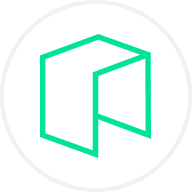aelf (ELF) has emerged as an example of a project that takes blockchain technology to the next level. In a sector that has rapidly evolved since its inception just over a decade ago, aelf stands out with its innovative approach and commitment to continuous improvement. With a stable and scalable structure, aelf offers businesses the ideal platform to build and operate their applications.
Moreover, aelf goes beyond just providing a blockchain; it offers a range of tools and resources to empower developers and foster a thriving ecosystem. This dedication to advancement and developer engagement sets aelf apart in the ever-changing blockchain landscape.
What is aelf?
aelf is an innovative open-source blockchain network designed as a comprehensive business solution. Unlike traditional blockchain systems, aelf employs a unique architecture consisting of one main blockchain accompanied by multiple side chains. This structure empowers developers and businesses to create and operate their own individual ecosystems. By enabling independent deployment and using decentralized applications (DApps) on separate side chains, aelf achieves resource isolation and optimal efficiency. .
The aelf project team
The aelf project was established in 2017 by a team of skilled and experienced blockchain developers led by Ma Haobo. Their primary objective was to develop a platform that caters to developers' needs, providing them with a secure, scalable, high-performance environment to build applications.
How does aelf work?
aelf operates on a unique technological framework incorporating a parallel processing model and its innovative aelf Delegated Proof of Stake (AEDPoS) consensus mechanism. Like Delegated Proof of Stake (DPoS), AEDPoS enhances the network's efficiency and scalability.
The aelf ecosystem is built on cross-chain technology, utilizing main-chain index and verification mechanisms. This intelligent design facilitates secure communication between the main chain and various side chains, enabling seamless integration and interaction within the aelf network.
ELF: aelf’s native token
The ELF token serves as the native cryptocurrency of the aelf ecosystem. Launched in late December 2017, the ELF token was designed with a maximum supply of 1 billion, representing its total supply. As of July 2023, approximately 62.22 percent of the ELF tokens are in circulation, accounting for 622.19 million units.
ELF use cases
The token of the project, ELF, offers various advantages. For instance, those who stake ELF can become nodes and join in governing decisions. The node system has different roles, like production nodes, candidate nodes, and voters. This lets holders take part in voting and contribute to project choices. Users also use ELF to cover fees for transactions and side-chain activities. Moreover, developers can use ELF to buy resource tokens, like special tokens that help create projects on the aelf platform.
Distribution of ELF
The distribution of ELF tokens is as follows:
- Twenty-five percent was allocated to the foundation, subject to a vesting period of 3 years.
- Twenty-five percent was sold during the private sale.
- Sixteen percent was retained by the team, with a vesting period of 2 years.
- Twelve percent is reserved for mining purposes.
- Seven percent was allotted to advisors, subject to a vesting period of 2 years.
- Seven percent was earmarked for marketing purposes.
- Five percent was distributed through airdrops to the community.
- Three percent was dedicated to funding partnerships.
The future of ELF
Up to now, ELF has been successful in its approach to creating an ecosystem that efficiently supports DApps. Depending on what developers require, this ecosystem is designed to provide both connection and separation. Like Polkadot's parachains, aelf's sidechains let users operate in their environment while staying connected to the main chain.
ELF continues to work hard to establish itself in the industry. Their recent upgrade to mainnet version 1.4.1 is another step towards this goal. This upgrade has improved data transmission performance using gRPC streaming and enhanced node network communication by adding support for gRPC bidirectional streaming.


































